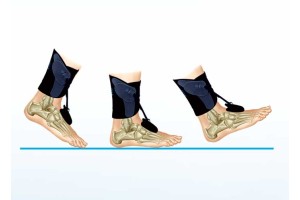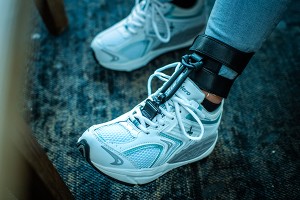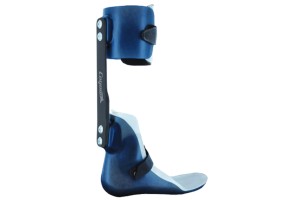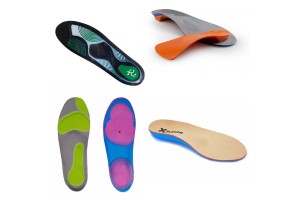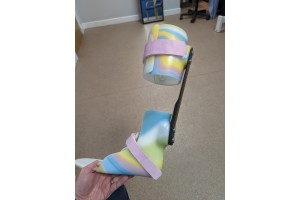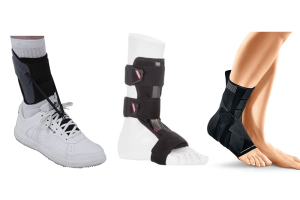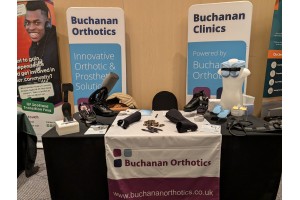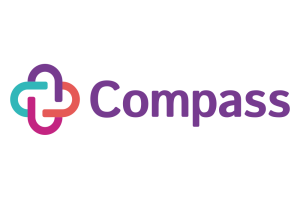What is Overpronation?
The term overpronation gets mentioned a lot in relation to musculoskeletal injury but what is it and is it actually important.
What is pronation?
To understand ‘overpronation’ you need to know what pronation is.
In short, pronation is just a descriptive term for a complex group of movements. Pronation is also not unique to the foot and ankle, your wrist can also pronate. However, we will be just talking about pronation at the ankle.
For the purpose of understanding we will describe pronation in relatively simplistic terms as unfortunately it can get very complex very quickly. People will spend whole careers looking and arguing about just this movement.
We will also only be talking about closed chain pronation i.e. when the foot is in contact with the ground as the definition is different when the foot is not in contact with the ground.
Where does pronation occur?
Pronation happens in the subtalar joint which involves the calcaneus (heel bone) and the talus (a small bone that sits between the ankle bones). As the name suggests with the prefix ‘sub’ it is below the talar bone.
The subtalar joint sits just below what you would think of as the ankle joint but it is part of the ankle complex.
(https://creativecommons.org/licenses/by-sa/2.1/jp/deed.en)
So what is pronation?
Closed Chain Pronation is:
- Eversion of the Calcaneus
- Plantarflexion of the Talus
- Adduction of the Talus
So what does that actually mean?
In simple terms the Heel bone (Calcaneus) is pointing away from the body. The talus is pointing downwards (Plantarflexion) and moving towards the inside (adduction)
Why does the ankle pronate?
There are a few reasons that pronation is important and required movement. But to put it simply it helps absorb shock when the heel hits the ground and adapt to uneven terrain. People who have subtalar arthritis or have had a surgical fusion often complain of pain or difficulties on uneven ground, showing how important this movement is.
Can you measure Pronation?
To put it simply not easily, it's a complex triplanar motion. Its components can be measured in various ways however with varying levels of accuracy. For example measuring heel eversion is notoriously difficult and prone to large margins of error.
So what is overpronation?
Overpronation does not have a definition and is a term that while in popular usage does not have a place in a clinical setting. There is no definition of what is too much pronation, some feet will have a lot of pronation available and some will not.
Why do people talk so much about overpronation then?
That is a complex question that is not easy to answer, but it is a mixture of sales technique from running shoe manufacturers (although they are getting better at not blaming it for every injury), poor understanding of the science and it's an easy thing to blame or write about in magazines and the internet.
In short it can be a simple answer to a complex problem.
I have flat feet, am I overpronated?
A foot that is going flat is functioning in a pronated position however, we would not describe that as overpronated.
It has been suggesting in the scientific literature that most people's feet function in a slightly pronated position.
If pronation is a normal movement that is required for normal function why does it get blamed for some many injuries?
The relationship between pronation and injury is complex. Multiple studies have shown that pronation has no effect on injury rates for some injuries and some association with others. It can be seen as a risk factor for some people however.
If you say pronation is not associated with injury why do you say insoles will help me?
While the motion of pronation itself is natural what is important is the structures of the foot's tolerance to the stresses applied to it. This can be prolonged stress or the speed at which the force is applied. A pronated flat foot will have increased stresses on certain structures, if the soft tissues can not tolerate these stresses they will become injured and painful. We call this theory of injury 'tissue stress theory'.
Structures such as the plantar fascia, tibialis posterior tendon and the spring ligament will all have the stresses increased on them when the foot is pronated. The aim of insoles or functional foot orthoses is to help unload these structures.
Also see What are orthotics
Tissue Overload?
If the tissues are overloaded for example through a sudden increase in activity level the first line of treatment is to unload them to allow for healing. This can often be done by an insole or a decrease in activity level. The next stage of treatment would be a gradual increase in load to improve the tissue strength to prevent further injury.
Other Factors to consider
There a number of factors in tissues becoming overloaded ranging from mechanical stress to hormonal stress. The total body stress can be seen as a risk factor for injury if you are burning the candle at both ends, not eating healthily and doing lots of training you will be at an increased risk of injury. It's why rest and sleep are so important and are a vital part of any rehab.
Conditions associated with pronation
- Posterior tibial tendon dysfunction
- Adult acquired flat foot
- Posterior heel pain
- Plantar Fasciitis
- Tarsal tunnel syndrome
- Functional Hallicus limitus
Conclusion
- Pronation is a complex triplanar movement that occurs at the ankle and is often blamed for a number of soft tissue injuries.
- While it can be associated with injury often it is not the only cause and may be incidental
- Some people with a flattened arch profile due to pronation will have no problems whereas others will.
- There is no such thing as over-pronation and it can't be measured
- Insoles may help reduce the load in structures to allow them to heal prior to a gradual increase of load to promote soft tissue tolerance to stress.
Contact Details
Email: [email protected]
Call: 0141 440 1999
Address: 603 Helen Street, Glasgow, Scotland, G51 3AR
Online Booking: Buchanan Clinic Appointments


